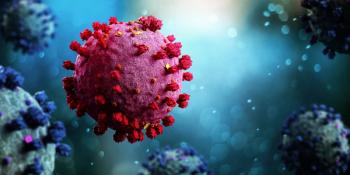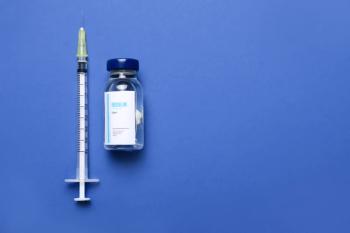
FDA Approves Biktarvy for Patients With HIV Previously Treated With Antiretroviral Therapy
FDA approves Biktarvy for HIV treatment in patients not virologically suppressed, enhancing options for those restarting antiretroviral therapy.
The FDA approved bictegravir 50 mg/emtricitabine 200 mg/tenofovir alafenamide 25 mg tablets (B/F/TAF; Biktarvy) for the treatment of individuals with HIV who have previously been treated with antiretroviral therapy and are not virologically suppressed. The approval also includes patients who have no known or suspected resistance to integrase strand inhibitors, including emtricitabine or tenofovir.1
“Continuous scientific discoveries and person-centric advances in HIV care have helped transform the treatment landscape,” Jared Baeten, MD, PhD, senior vice president of virology therapeutic area head at Gilead, said in a news release.1 “At the same time, not everyone is achieving long-term HIV treatment success, especially when someone experiences an interruption in their HIV care. With this new indication, Biktarvy can now support an even broader range of PWH in reaching their long-term treatment goals, including those who are not virologically suppressed and who are restarting treatment.”
The new indication is based on evidence from 2 phase 3 trials: study 1489 (
In study 1489 and study 1490, the primary outcome included the percentage of individuals who achieved less than 50 copies/mL of HIV RNA at week 48, and secondary end points included the percentage of individuals who achieved less than 50 copies/mL of HIV RNA at week 96 and week 144, the percentage of individuals who achieved less than 20 copies/mL of HIV RNA at week 48, week 96, and week 144, the change from baseline in log10 HIV RNA at week 48, week 96, and week 144, and the change from baseline in CD4+ cell count at week 48, week 96, and week 144, among others.2,3
The authors of the studies stated that among those in the study, 98.6% maintained less than 50 copies/mL of HIV RNA at week 240. Mean change in CD4+ count from baseline increased by 338 cells/μL, and there was no treatment-emergent resistance to B/F/TAF, according to the results.4
“For PWH [people with HIV] who have stopped treatment or fallen out of care and are not virally suppressed, re-engagement and restarting treatment are crucial for preventing the spread of the virus and supporting individual long-term outcomes,” Paul E. Sax, MD, clinical director of the division of infectious diseases at Brigham and Women’s Hospital, said in the news release.1 “This expanded indication can now help health care providers more confidently support an even broader range of PWH, including PWH who are not virologically suppressed and are restarting HIV treatment."
READ MORE:
Ready to impress your pharmacy colleagues with the latest drug information, industry trends, and patient care tips? Sign up today for our
REFERENCES
1. US FDA approves new Biktarvy indication for people with HIV who are treatment experienced and restarting antiretroviral treatment. News release. Gilead. July 30, 2025. Accessed August 5, 2025. https://www.gilead.com/news/news-details/2025/us-fda-approves-new-biktarvy-indication-for-people-with-hiv-who-are-treatment-experienced-and-restarting-antiretroviral-treatment
2. Study to Evaluate the Safety and Efficacy of Bictegravir/Emtricitabine/Tenofovir Alafenamide Versus Abacavir/Dolutegravir/Lamivudine in Human Immunodeficiency Virus-1 (HIV-1) Infected, Antiretroviral Treatment-Naive Adults. ClinicalTrials.gov identification: NCT02607930. Updated March 2, 2022. Accessed August 5, 2025. http://clinicaltrials.gov/study/NCT02607930
3. Study to Evaluate the Safety and Efficacy of Bictegravir/Emtricitabine/Tenofovir Alafenamide Versus Dolutegravir + Emtricitabine/Tenofovir Alafenamide in Human Immunodeficiency Virus (HIV-1) Infected, Antiretroviral Treatment-Naive Adults. ClinicalTrials.gov identification: NCT02607956. Updated March 7, 2022. Accessed August 5, 2025. https://clinicaltrials.gov/study/NCT02607956
4. Sax PE, Arribas JR, Orkin C, et al. Bictegravir/emtricitabine/tenofovir alafenamide as initial treatment for HIV-1: five-year follow-up from two randomized trials. EClinicalMedicine. 2023;59:101991. Published 2023 May 11. doi:10.1016/j.eclinm.2023.101991
Newsletter
Pharmacy practice is always changing. Stay ahead of the curve with the Drug Topics newsletter and get the latest drug information, industry trends, and patient care tips.























































































































